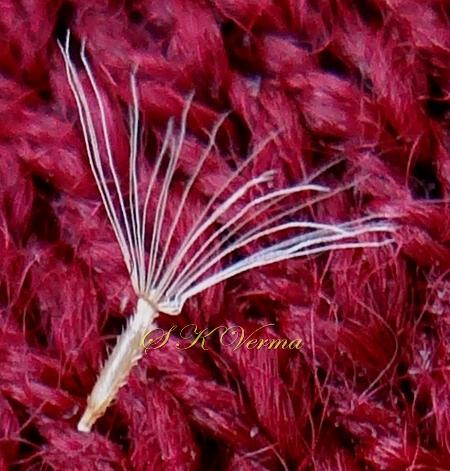ERIGERON
Erigeron
L., Sp. Pl. 2: 863. 1753; Fl. China @ eFloras.org 20-21: 649; Conyza Lessing, Syn. Gen. Compos. 203. 1832; J. L. Strother, Fl. North. Amer. @ eFloras.org 20: 348.
Mostly annuals, 10-120(-350+) cm. Stems usually erect, branched mostly distally, glabrous or hispid, hispidulous, strigillose or strigose. Leaves basal and cauline, alternate, petiolate or sessile; leaf blades mostly lanceolate to oblanceolate or linear, margin wavy, toothed or entire; faces usually hispid, hispidulous, strigillose or strigose, eglandular. Capitula radiate or disciform, usually in paniculiform or corymbiform arrays. Involucres +/- turbinate, 2-5(-7+) mm diameter. Phyllaries 20-40+ in 2-4 series, appressed, the larger usually 3-nerved, lanceolate to linear, unequal, +/- medially herbaceous and marginally membranous, abaxial faces glabrous or hirsutulous, hispidulous or strigose. Receptacles +/- flat, pitted or smooth, epaleate. Ray florets pistillate, fertile: 20-45+ in 1-2 series, corollas white to purplish, filiform with limbs filiform to elliptic, 0.1-1(-1.5+) mm. OR 20-150+, corollas ochroleucous, filiform, limbs lacking, distally truncate or 2-5 toothed. Disc florets 3-30+, bisexual, fertile; corollas yellowish, tubes shorter than narrowly funnelform throats, lobes 5, erect or spreading, deltate. Style branch appendages deltate. Cypselae compressed, oblong to elliptic, 1-nerved on each edge, faces glabrous, strigillose (hairs 0.05-0.1+ mm), eglandular; Pappi persistent, of 15-25+ pinkish, sordid (dirty), tawny or white, +/- equal, barbellulate, apically attenuate, bristles in 1 series.
449 species
Erigeron bonariensis
Erigeron bonariensis
L., Sp. Pl. 2: 863. 1753 Nair, Fl. Bashahr. Himal. 151. 1977; Sharma & Kachroo, Fl. Jammu (Illustr.) 2: t. 121. 1983; Dhaliwal & Sharma, Fl. Kullu Dist. 370. 1999; Kaur & Sharma, Fl. Sirmaur 376. 2004; Singh & Sharma, Fl. Chamba Dist. 408. 2006; Fl. China @ eFloras.org 20-21: 649; Conyza bonariensis (Linn.) Cronq., Bull. Torrey Bot. Club 70: 632. 1943; Fl. North. Amer. @ eFloras.org 20: 349; E. linifolius Willd. Sp. Pl. 3: 1955. 1803; Hook. f., Fl. Brit. Ind. 3: 254. 1881; Collett, Fl. Siml. ed. 2: 251. 1921 (Reprint 1980).
Annual or biennial herbs; stem erect or ascending, 20-50(-150+) cm high, branched mostly distally, lateral branches equalling or overtopping main axis, branchlets usually ribbed, densely strigose, sparsely hirsute/ hispid. Basal leaves withered at anthesis; lower cauline leaves long petiolate; blade oblanceolate or oblong- lanceolate, 3-8 cm x 0.3-2.5 cm, surfaces densely strigose or hispidulous, base attenuate, margin usually coarsely serrate or pinnatilobed, sometimes entire, apex acute or obtuse; mid and upper cauline leaves shortly petiolate or sessile, blade narrowly lanceolate or linear, (1-) 3-7 cm x 0.2-0.5(-1) cm, margin dentate or entire. Capitula radiate, 0.5-1.0 cm across, numerous forming paniculate, rarely corymbose inflorescence. Peduncle 1-4 cm, strigose. Involucre campanulate or cup-shaped, ca. 5 mm long; phyllaries 3-seriate, coarsely hairy or abaxially hispidulous, 2.5-5.0 mm long, outer greenish to purplish, lanceolate, shorter, densely hairy; inner longer stramineous to purplish, linear, attenuate, more scarious, less hairy; phyllaries deflexed after dehiscence of cypselae. Receptacle 3-5 mm in diameter in fruit, epaleate. Peripheral Ray florets numerous, in many series, pistillate, fertile. Corolla 2.9-3.5 mm long, filiform, ligulate, 3-toothed, ochroleucous. Central /Inner Disc florets much fewer than ray florets, nearly equal to ray florets. Corolla ca. 3.5 mm long, funnelform, 5-toothed, yellow. Cypselae 1.2-1.8 mm long, flattened, faces glabrous or sparsely strigillose. Pappus of 15-25+ sordid or tawny, bristles 3-4+ mm long, in one series, connate at base, persistent.
Common Names: Flaxleaf Fleabane, Hairy Fleabane, Ragweed, Rough Conyza, Tall Fleabane
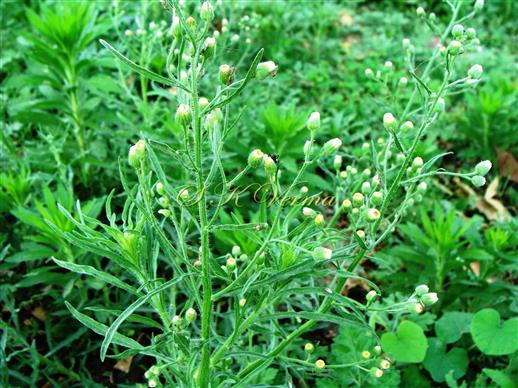
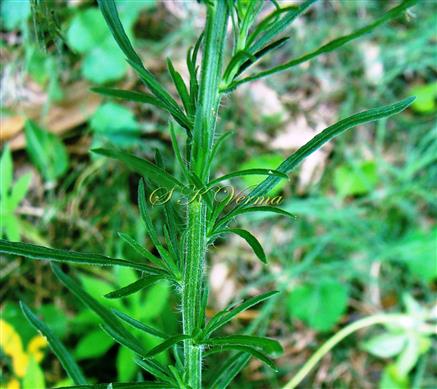
 and middle cauline leaves-4972.jpg)
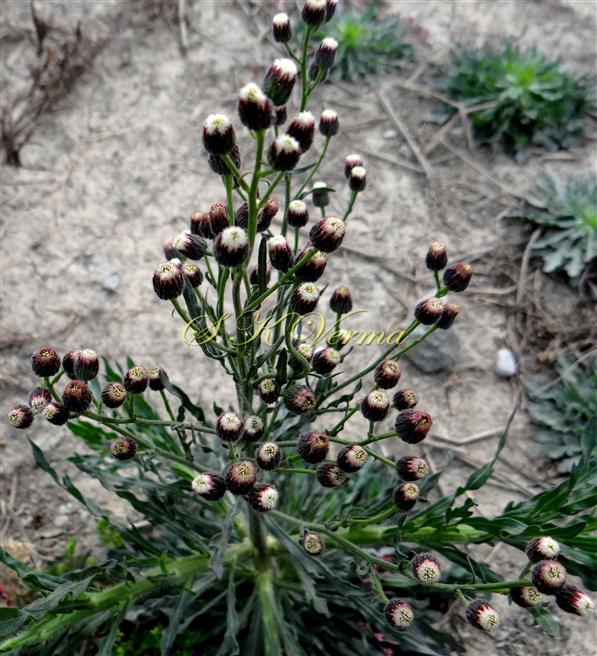
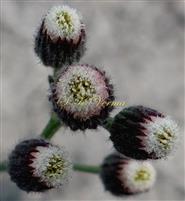
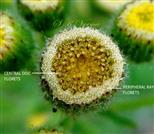
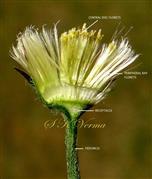
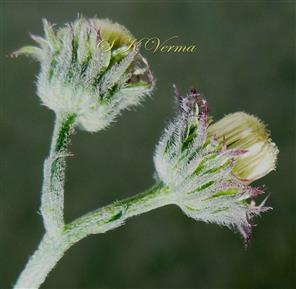
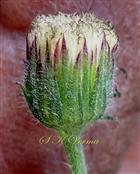
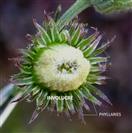
 and Inner floretsDSC01918A.jpg)
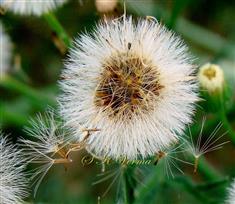




 and middle cauline leaves-4972.jpg)







 and Inner floretsDSC01918A.jpg)

